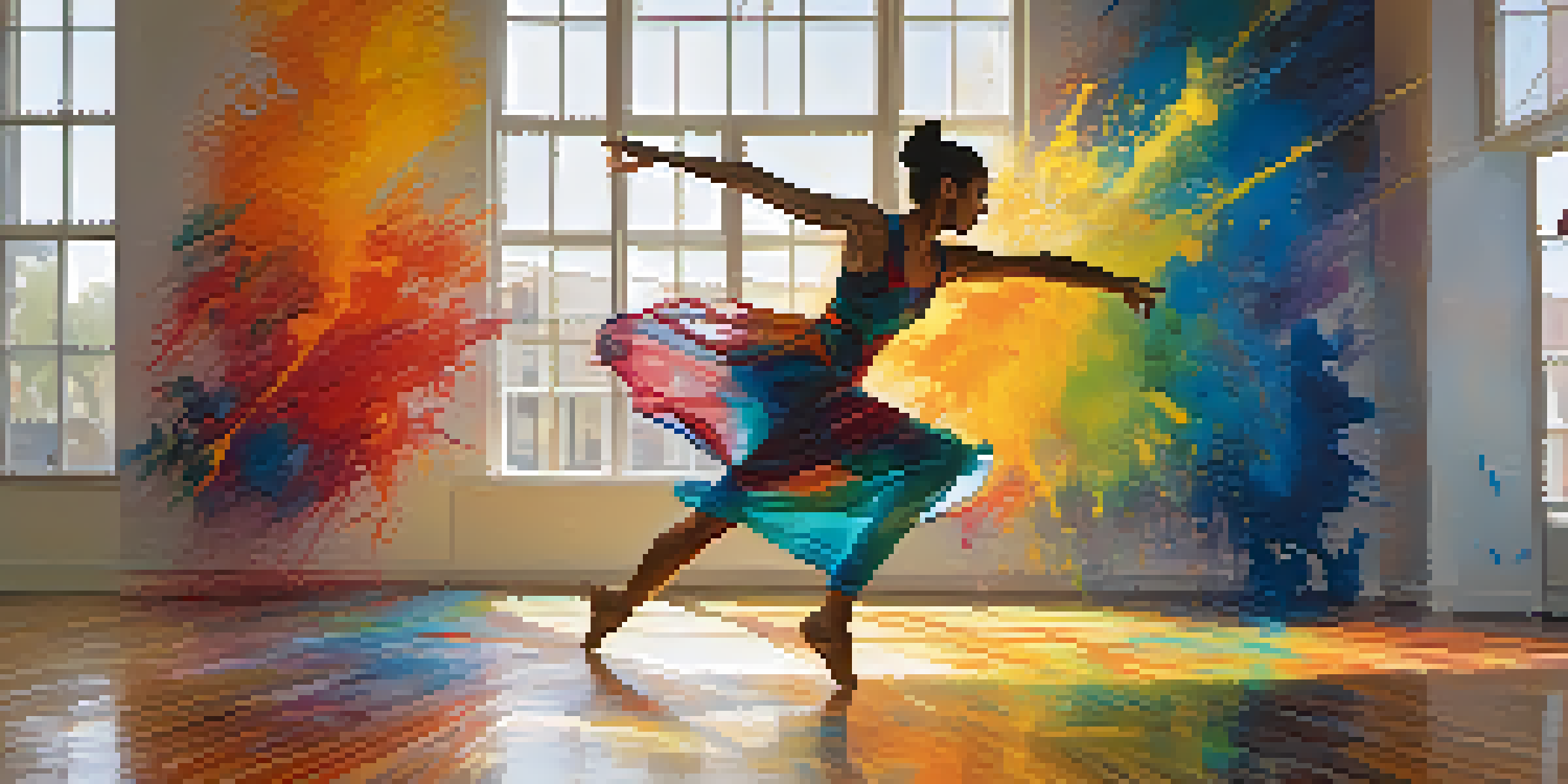Collaborative Projects Between Dancers and Visual Artists

The Magic of Collaboration in the Arts
Collaboration between dancers and visual artists creates a unique synergy, where movement and visual storytelling intertwine. This partnership not only enhances the artistic expression but also broadens the audience's understanding of both forms. Imagine a dancer interpreting a painting through their movements, transforming static art into dynamic storytelling. Such collaborations break down barriers and invite audiences to experience art in multidimensional ways.
Historical Context: Dance Meets Visual Art
The relationship between dance and visual art has deep historical roots, dating back to ancient civilizations where movement was often depicted in art forms. Artists like Edgar Degas famously captured dancers in their grace, highlighting the beauty of their movements on canvas. Fast forward to the 20th century, where modern art began to embrace performance art, leading to groundbreaking collaborations that blended these two creative outlets. This fusion inspires contemporary artists to explore new dimensions in their work.
Collaboration Enhances Artistic Expression
The synergy between dancers and visual artists transforms traditional art forms into dynamic, immersive experiences.
Modern Examples of Collaboration
Today, we see numerous collaborations that push creative boundaries, like the work of choreographer Martha Graham and visual artist Isamu Noguchi. Their partnership produced iconic dance pieces that were not only performances but also immersive experiences. Another example is the collaboration between visual artist Olafur Eliasson and various dancers, creating installations where movement plays a crucial role in the artwork. These projects exemplify how artists from different disciplines can create something truly innovative together.
The Role of Technology in Artistic Collaboration
With advancements in technology, the collaboration between dancers and visual artists has taken on new forms. Digital media allows for interactive installations where audiences can engage with both dance and visual art in real-time. Virtual reality experiences can transport viewers into a world where they can witness the merging of movement and visual artistry like never before. This technological integration not only enhances the experience but also invites a broader audience to appreciate the synergy.
Technology Expands Artistic Collaboration
Advancements in technology, such as digital media and virtual reality, allow for interactive art experiences that engage audiences in new ways.
Benefits of Collaborative Projects for Artists
Collaborative projects offer numerous benefits for both dancers and visual artists. By working together, artists can expand their creative horizons and learn new techniques from each other. This exchange can lead to innovative ideas that might not have emerged in isolation. Additionally, combining different artistic forms can attract diverse audiences, fostering a greater appreciation for the arts as a whole.
Challenges in Collaborative Projects
While collaboration can be rewarding, it also presents its fair share of challenges. Differing artistic visions can lead to conflicts, requiring open communication and flexibility. Moreover, balancing the technical aspects of choreography with visual artistry demands a mutual understanding of each discipline. These challenges, however, can often result in richer, more nuanced artwork when navigated successfully.
Collaborative Projects Foster Innovation
Working together enables artists to learn from one another, leading to innovative ideas and broader audience appeal.
Audience Engagement Through Collaborative Art
One of the most exciting aspects of collaborative projects is how they engage audiences on multiple levels. Viewers are not just passive spectators; they become part of an experience that incorporates movement and visual stimulation. This immersive engagement can provoke emotional responses and provoke thought, making the artwork more impactful. By bridging the gap between different art forms, these collaborations invite the audience to explore new perspectives.
The Future of Collaborative Art Projects
As the art world continues to evolve, the future of collaborative projects between dancers and visual artists looks promising. With an increasing emphasis on interdisciplinary work, artists are encouraged to explore new ways of expressing their ideas. This trend signifies a growing recognition of the value that such collaborations bring to the artistic community. Ultimately, as artists break free from traditional boundaries, we can expect to see even more innovative and exciting projects emerge.